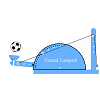
About this course
This module describes how to download and install the Sigma Magic software. If you have not already installed the software on your computer, you would start here.
Pre-requisites
You will need a Windows PC with Microsoft Excel 2010 or higher in order to install the Sigma Magic software. If you have a Mac then you should be able to run the Windows OS using software such as Parallels Desktop.
Expected Time
This course is expected to take roughly 15 minutes to complete.





